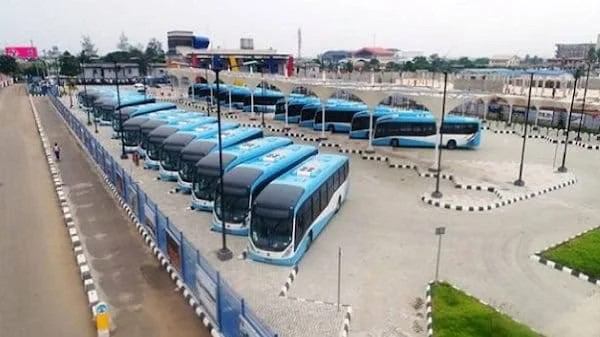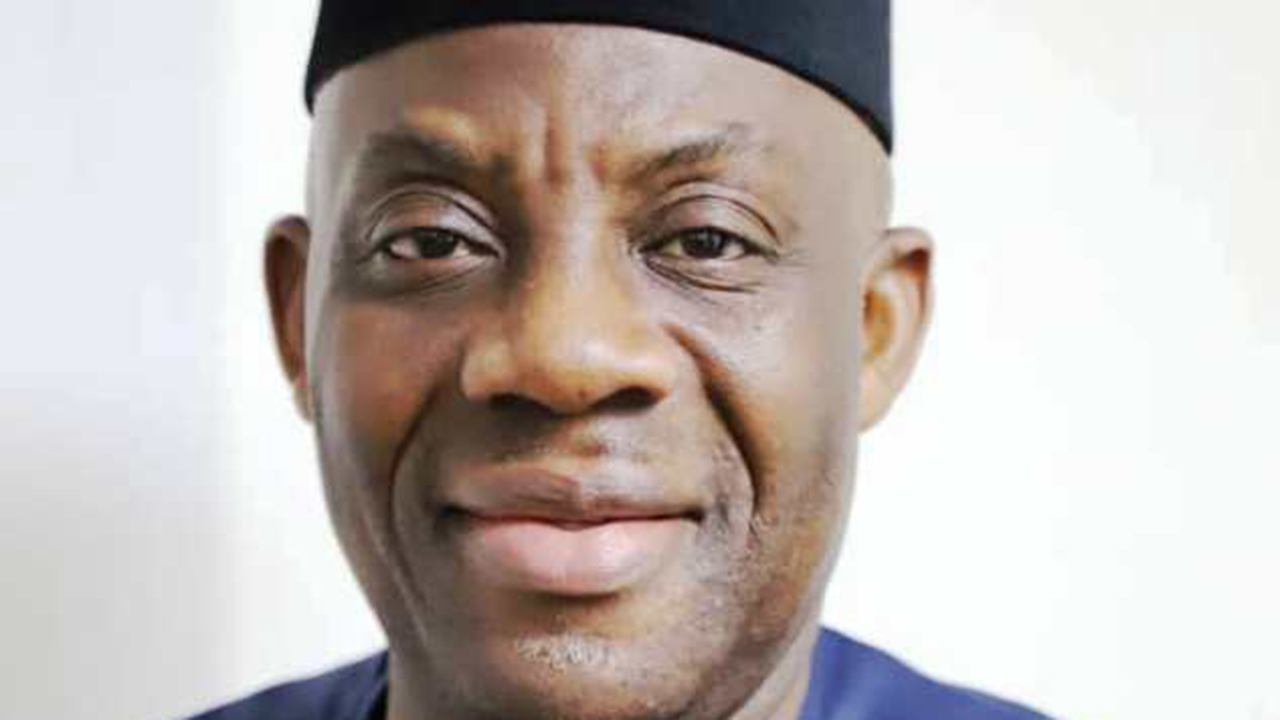With a multimodal transport revolution underway, from electric rail lines to modern ferries and smarter bus routes, Lagos is positioning itself as a model African megacity. For decades, the challenges of overpopulation, infrastructural decay, and inefficient public transport have plagued commuters and impeded economic productivity.
But today, Lagos is charting a new course, one that positions it as a continental leader in sustainable and integrated urban transportation. With over two million passengers transported on the Blue Line Rail since its launch, more than 60 million served by state-run buses since 2019, and a vibrant, revitalized water transport system, Lagos State is showcasing the power of coordinated transport policy, innovation, and political will.
One of the State government’s most remarkable achievements is the successful take-off of the Blue Line Rail, an electric light rail system that has transported over 2 million passengers since it commenced full commercial operations.
This feat reflects both the reliability of the infrastructure and the readiness of Lagosians to embrace mass transit solutions. Phase I is now fully operational, while work is ongoing on Phase II with its 8 stations and additional rolling stock.
The Red Line, a 37km rail system stretching from Marina to Agbado, utilizes the existing Nigerian Railway Corporation (NRC) corridor, thereby demonstrating smart infrastructure leveraging.
Equally impressive is the performance of state-owned buses under the Bus Reform Initiative (BRI). Since 2019, over 60 million commuters have benefited from the Lagos Bus Service Limited (LBSL), which now moves more than 42,000 passengers daily through a fleet of over 300 buses and 21 active routes. With average fares pegged at N261.67, lower than standard commercial rates, the initiative not only ensures affordability but also promotes inclusivity.
Water transportation, long underutilized in the State, has emerged as a critical mobility option, thanks to the Lagos Ferry Services (LAGFERRY) and the strategic OMI EKO project in collaboration with the French Development Agency (AFD).
Within just one year, LAGFERRY has transported over 280,000 passengers, operating a fleet supported by state-of-the-art terminals and modern surveillance systems. These efforts have helped decentralize urban movement, improve safety, and catalyze growth along the waterways.
In a city surrounded by water, tapping into the potential of inland waterways is not just practical—it is visionary. The OMI EKO project is a flagship water mobility initiative that will see the construction or renovation of 25 terminals, the acquisition of over 78 electric ferries, and the dredging of 140km of routes to enhance accessibility. This investment is already bearing fruit. The opening of the Ijegun Egba Ferry Terminal in January 2025 marked a new chapter for waterfront communities, reducing commuting times and creating new economic linkages.
LASWA’s ISO 9001:2015 certification is a testament to its commitment to operational excellence and safety. In a bid to demystify water travel for young Lagosians, LASWA also launched the Water Savvy Kids Program, educating children on water safety and swimming—a community-forward, life-saving intervention.
To drive tourism and increase water ridership, LAGFERRY has launched promotional events like IGNITE THE WATERWAYS, International Women’s Day ferry tours, and the annual Boat Regatta. These not only highlight Lagos’ cultural vibrancy but also position its waterways as viable commercial and recreational corridors.
The heart of Lagos’ transport reform is its strategic and inclusive Transport Policy, championed by the Commissioner for Transportation, Oluwaseun Osiyemi. This framework promotes safety, accessibility, affordability, and sustainability across all modes—land, rail, and water. It embodies Governor Babajide Sanwo-Olu’s vision of A Greater Lagos Rising, one where development serves people at every socio-economic level.
The Bus Reform Initiative (BRI) exemplifies this vision. It organizes the chaotic bus transport landscape into three coherent tiers: Bus Rapid Transit (BRT), Standard Routes, and First and Last Mile (FLM) services. These tiers are designed to optimize connectivity from city centers to underserved neighborhoods. Key BRI achievements include the commissioning of the Abule Egba Bus Terminal and the construction of 51km of Quality Bus Corridors (QBCs), offering dedicated lanes and upgraded infrastructure to reduce delays and enhance commuter comfort.
Furthermore, the integration of the Cowry Card, a digital fare payment system, has streamlined operations, eliminated the inefficiencies of cash-based transactions, and improved accountability. With the card usable across multiple modes, Lagos is taking bold steps toward a unified ticketing system, mirroring standards in advanced cities.
Sustainability underpins Lagos’ transportation overhaul. Solar-powered traffic signal lights, road markings, and medians have been installed across 49 upgraded junctions. These enhancements facilitate smoother vehicle flow and improve pedestrian safety. With 3,941 newly developed parking slots and enhanced enforcement of traffic regulations, Lagos is tackling congestion on multiple fronts.
Technological integration is also central. The Lagos Bus Service Limited (LBSL) has implemented an Enterprise Resource Planning (ERP) system to optimize route planning, personnel deployment, and fleet maintenance. The benefits of this digital backbone are evident: efficient scheduling, reduced vehicle downtime, and improved commuter experience.
On the rail front, energy efficiency is a top priority. The Blue Line uses electric trains that drastically reduce carbon emissions. When fully operational, it is expected to ferry 500,000 passengers daily, significantly decreasing the number of cars on the roads and cutting pollution.
Transport in Lagos is no longer just about getting from point A to B. It’s about connecting people to opportunities, lowering the cost of living, and building resilient communities. The economic benefits of this multimodal network are immense: time savings, improved business logistics, job creation, and urban renewal.
Moreover, improved connectivity helps bridge spatial inequalities. Communities previously marginalized due to poor access are now benefiting from robust transport links. From the slums of Makoko to the waterfronts of Badagry, mobility is becoming a right, not a privilege.
The government’s collaboration with private sector players, such as Yamaha, Showmax, and local media, has opened up avenues for branding, logistics, and content distribution via the water routes. These innovations hint at the future potential of Lagos’ Blue Economy, an ecosystem where transport, tourism, and technology converge.
While the achievements thus far are laudable, Lagos is not resting on its laurels. The Green Line Metro Project, which will run from Marina to Lekki Free Zone, and the Purple Line connecting Redemption Camp to Ojo, are future metro expansions that promise to extend the gains of current investments.
With population growth showing no signs of slowing, urban transport will continue to face pressure. However, Lagos’ model provides a compelling case study for other African megacities. Its blend of long-term vision, public-private partnerships, and community-centered planning is proving to be both scalable and replicable.
In an age where cities must innovate or collapse under their weight, Lagos has chosen transformation. From the silent hum of electric trains to the roar of water taxis on the lagoon and the buzz of bus terminals alive with activity, the city is finding its rhythm.
What the Babajide Sanwo-Olu administration has achieved in the past six years in the transport sector is more than just transport upgrades—it has reimagined the possibilities of urban life. In doing so, the administration is sending a powerful message: Africa’s future is not just arriving. It’s moving—and in Lagos, it’s moving smart.
Ogunbiyi is Director, Features, Ministry of Information & Strategy.






